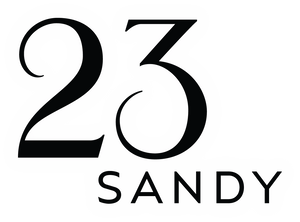| Title | The Dawn |
| Artist / Creator | Poppy Dully |
| Place of Publication | Portland, OR |
| Publication Date | 2013 |
| Number of Images | 11 |
| Image Process | Monotypes printed on found printed pages |
| Structure / Binding | Drumleaf binding with handmade cover |
| Medium / Materials | Oil based ink, pva glue, bookcloth, bookboard |
| Paper Stock | Found pages |
| Number of Pages | 12 |
| Dimensions (WxHxD) | 7 x 5 x .5 inches closed; 7 x 10 x .5 inches open |
| Edition Size | Unique |
| Signed & Numbered | Yes |
My monotype books start with an interesting found book. The quality of the cover and paper, type of binding, and subject of the found book will capture my interest. I research the book to find how it has been interpreted through other mediums or find a film that corresponds with the book’s themes. I study the film, finding frames that might work with the book and select a few that tell the story. The monotypes are printed with oil based ink on the pages of the book. The pages are rebound in the original cover or hand bound in a handmade cover.
This book is the 1898 play The Dawn (Les Aubes) was written by Emile Verhaeren (a Belgian Poet, 1855-1916) and translated from the French by Arthur Symons (a British poet, 1865-1945). The play which is written in a mixture of prose and verse was considered very experimental in France at the time. Both Verhaeren and Symons were involved with the Symbolist School.
The images were taken from Fados, a film directed by Carlos Saura in 2007 and features the musicians, singers and dancers of this unique Portuguese music tradition. Fado means fate or destiny and the music became popular in the 19th century. The songs can be about anything, but they follow a certain structure and are often about mournful times and the life of the poor. Amalia Rodrigues “The Queen of Fado” has made this music genre well known today.
Artist Bio
Artist Statement Poppy Dully’s interest in combining monotypes and book pages into altered books started from four sources: painting mentor Leigh Hyams’ pen and ink artist’s books; William Kentridge’s films and drawings on book pages; the films of French film director Agnes Varda; and a long ago college art assignment to study film for compositional references. When Poppy creates an altered book with monotypes she looks for a book that will relate in its size, format, and text with the film images. With a vintage set of psychology textbooks, Poppy began her experiment with altered books. Using a digital camera, she photographs scenes from the film that seem most eventful. From these photos, she selects 8 to 10 that can tell the story visually. These photos are her source material for the monotypes which she creates by drawing on the plate and then rolling and wiping off oil based ink on the reverse side of plexi-glass plates before printing on the book pages that she has separated from the book. She backs the dried monotypes onto accordion pages that she reassembles in the book’s original cover. Poppy continues to explore the relationship of storytelling in film and books in her altered books. Sometimes it is the discovery of a second hand book that connects her to a film and other times it is the moving images of the film that connects her to a book. Artist Biography Poppy Dully (b.1947, San Francisco, CA) is a Portland, Oregon painter, printmaker, and book artist. She works in acrylics, oil, pen, and ink on a variety of surfaces. She studied design and cultural anthropology as an undergraduate at University of California, Berkeley, received a Masters in Public Health from University of California Los Angeles and worked for over 20 years in fundraising and non profit management in Portland. She has shown her paintings and prints around the Northwest since 1998. Poppy’s altered book with monotypes, After Cleo, 5 to 7, was exhibited in the College Book Art Association nationally juried show at the 23 Sandy Gallery in December 2009.


